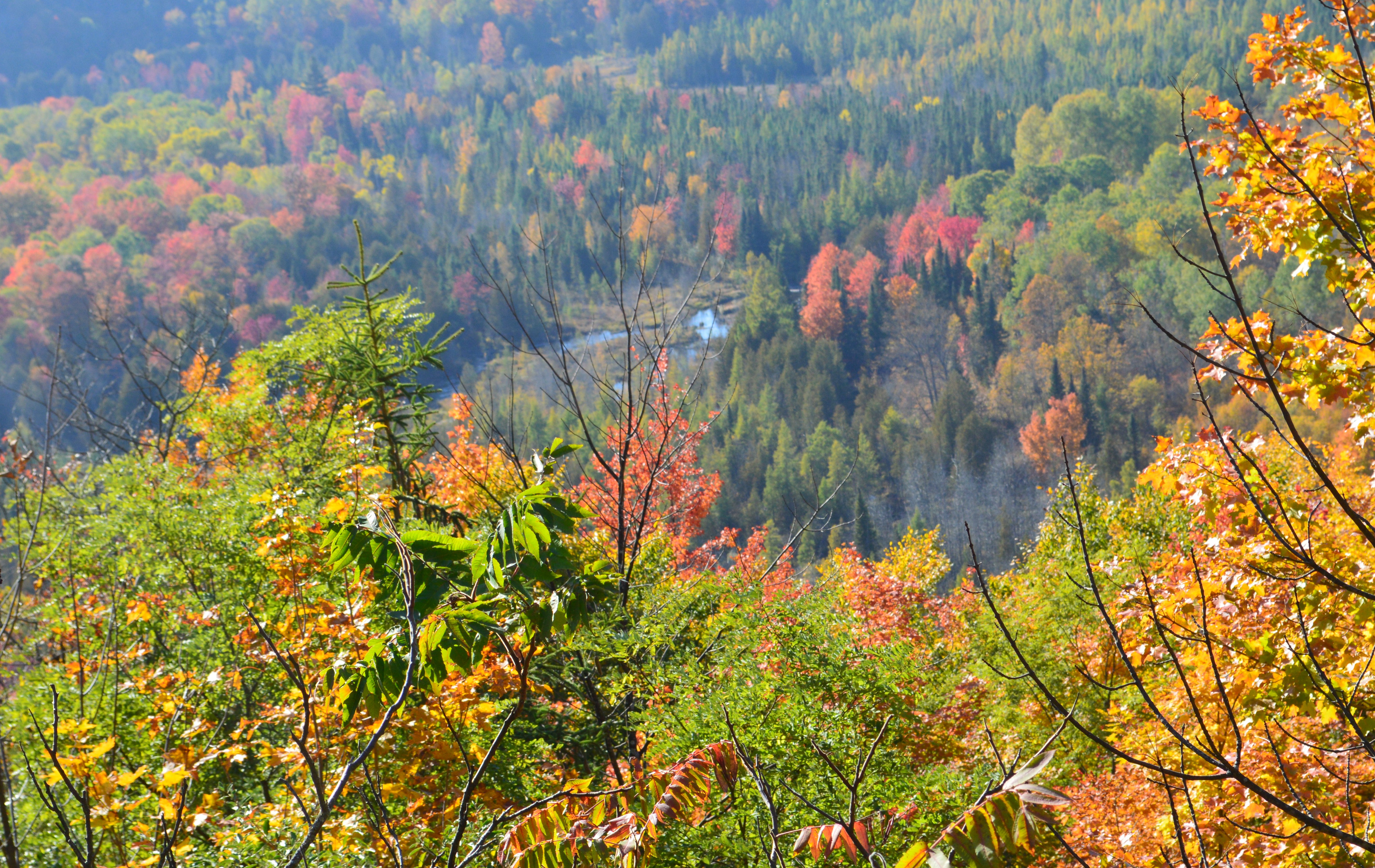Articles
If you didn’t make it to the top of Deadman’s Hill to check out the colors this year well, you’re a little late.
At 1,329 feet, the peak offers a bird’s-eye view of the Jordan River Valley which, only a week ago, was lit up like the Fourth of July. Aside from one or two cell towers in the distance, there’s not a single manmade structure in sight – just trees, rolling hills and a winding river for as far as the eye can see. Rightfully so, it’s a hotspot for tourists and locals who flock to the summit for photos.
A view of the Jordan River and surrounding fall colors. Photo by Chelsea Engle
That moment has come and gone but it’s still worth the trip to go see the valley for yourself, either from the top of the hill or from the spring-fed river for which the valley is named. Its 18,000 acres of protected and picturesque public land has much more to offer if you’re willing to look. The best part is that the valley is beautiful year round, so you’re never too late.
For your convenience, here are some of my favorite waypoints within the Jordan River Valley, some with basic directions of how to get there. In return, I ask you to leave these places better than you found them – pick up any trash you see and treat the area with respect. Much appreciated.
Deadman’s Hill Overlook
This is the easiest way to see the valley but you’ll have to work a little harder to experience it. More on that later.
Visitors to Deadman’s Hill will read about the fate of “Big Sam,” a lumberjack whose tragic fate in 1910 led to the hill’s name.
Access to the overlook is located on Deadman’s Hill Road just a few miles south of Elmira on US-131. Take the road to the end and follow the signs to the parking area. There’s a pit toilet and information kiosk here. It’s also the trailhead for a three-mile day hike and an 18-mile overnight loop.
Landslide Overlook
This is the lesser known but equally spectacular view of the valley from its southern end. The 18-mile loop will get you here but so will your car. Head west from Alba on C-42 a few miles until you see a brown DNR sign for the overlook on the north side of the road. Take that dirt road to the end. Keep in mind that both overlooks are at the end of seasonal roads.
The day hike
Don’t be fooled by the term “day hike” – even the 3-mile loop descends several hundred feet into the valley and calls for good hiking boots, a bottle of water and a starting time at least 4 hours before sundown. The sun sets early this time of year and it gets dark fast in the valley, so allow yourself enough time to get back out.
Basic survival stuff — knife, lighter and whistle – is recommended just in case you get lost. There’s only one road out and it’s a heck of a walk.
That said, you’ll be rewarded with good exercise, a deck view of one of the river’s feeder springs and a nice photo op with a gigantic rock left behind by the glacier that carved the valley.
The overnighter
I finally did this hike in 2012 with a couple friends. At the midway point is Pinney Bridge Campground, set back from the river on a hill. This stretch of the river is really unique for the dozens of little islands throughout, each one connected to the next with cedar roots serving as bridges.
Pinney Bridge crosses the Jordan River at a decent fishing and swimming hole but keep in mind the river fed by groundwater is extremely cold year round. The bridge can be reached by heading east off M-68 via Pinney Bridge Road.
My friends and I had planned on a trout dinner on our overnighter. We caught a few small trout but ended up eating a lot of rice and beans.
The first day we followed the river and got some fishing in. The second day took us to the hatchery and Landslide Overlook, plus a lot of elevation changes. It’s hard work but worth it.
Jordan River National Fish Hatchery
There’s three ways in to the hatchery: The trail, the road winding through the valley, and a nice paved road a few miles south of Elmira off US-131.
The federal hatchery produces about 2.2 million lake trout annually which are released into the Great Lakes. Currently they’re adding another raceway building which will house an experimental herring-rearing program.
The raceway buildings are open to the public and so are the numerous wildflower gardens on the hatchery grounds. They’re definitely worth a trip in the summer when thousands of native plants are in full bloom.
The many wildflower gardens at the Jordan River National Fish Hatchery have been planted to attract pollinators like this honeybee. Photo by Chris Engle
The salmon
There’s another interesting fish in the river and it has nothing to do with the hatchery. Though I’ve never spotted one alive, salmon run up the Jordan this time of year to spawn. I’ve only seen their carcasses.
Salmon running upriver is nothing new. What’s unique in this case is the obstacles they have to overcome to get as far up the Jordan as they do.
The fish leave Lake Michigan and swim through Round Lake and Lake Charlevoix before entering the river at East Jordan. From there they swim another 15 miles upstream, vaulting over cedar roots and under deadfalls, sometimes in only six inches of water. Finally they reach gravel spawning beds, do their business and die. Since salmon spawn where they hatch, all this effort must pay off.
All of this is what makes the Jordan River Valley a special place year round and it is always worth the adventure.
Chris Engle is an avid outdoorsman, stay-at-home dad and outdoor columnist for the Gaylord Area Convention & Tourism Bureau and the Gaylord Herald Times. He can be reached at englemobile@gmail.com.

